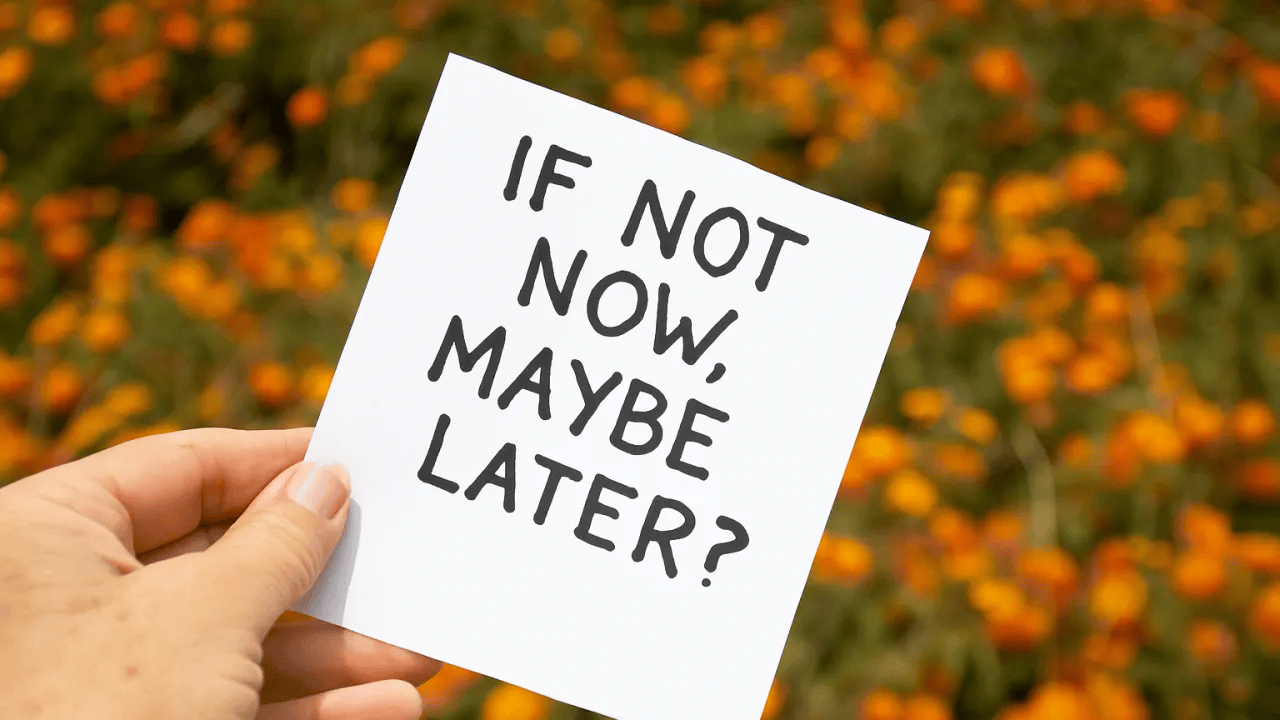Have you ever defended a decision long past the point when you knew it wasn’t working?
The data doesn’t lie but admitting you were wrong often feels like professional suicide.
In a field that constantly preaches “user-centred” and “evidence-based,” we’re remarkably bad at changing our minds.
We treat pivoting as weakness, when it’s actually the most honest thing we can do.
📌 What’s Inside
- Why changing your mind is the smartest thing you can do
- The sunk cost fallacy
- What happens when we refuse to evolve
- The cost of being “right”
- What this looks like in practice
Why changing your mind is the smartest thing you can do 💡
As UX’ers, we live in iteration. We sketch, test, learn, and pivot. It’s literally our process.
Yet somehow, when it comes to our own ideas, we expect ourselves to get it right the first time. We internalise that early hypothesis as if it’s carved in stone, defending it even when users and data are telling us it doesn’t work.
This is intellectual dishonesty. And it’s costing us better products.
Real intellectual honesty means letting evidence lead, not massaging your own ego.
It’s the courage to say “I got this wrong” without treating it like a professional defeat.
Because changing your mind shows curiosity, humility, and rigor. The exact qualities that make great designers great.
Think about the designers and researchers you most respect. Chances are, they’re not the ones who stubbornly cling to their first idea.
They’re the ones who evolve, who openly question their assumptions, who model the kind of learning they expect from their teams.
The sunk cost fallacy 💸
The biggest obstacle to this kind of honest thinking is the sunk cost fallacy.
You know this one intimately, even if you don’t call it by name.
It’s that voice that says: “We’ve already spent three months on this feature. We can’t just throw it away now.” It’s the flow that frustrates users, but you push it forward anyway because of all those invested hours.
The sunk cost fallacy is our tendency to continue down a path because of what we’ve already invested (time, effort, reputation) even when all the evidence says we should stop.
We convince ourselves that abandoning the work means it was wasted.
But continuing actually compounds the waste.
Daniel Kahneman, who spent his career studying how we make decisions, put it bluntly:
“The sunk-cost fallacy keeps people for too long in poor jobs, unhappy marriages, and unpromising research projects.”
In UX, it keeps us building the wrong things.
But when we refuse to let go of bad ideas, we don’t just hurt the product, we also derail trust, drain energy, and kill any innovation.
Teams start optimising for consistency rather than correctness. People stop challenging assumptions because they’ve seen what happens when someone admits they were wrong.
What happens when we refuse to evolve 🌍
Imagine if nobody ever changed their mind.
Imagine if Ptolemy’s model of Earth at the center of the universe had remained unquestioned. No Copernicus. No Galileo. No understanding of planetary motion, no accurate navigation, no foundation for modern physics. We’d still think we were the cosmic center of everything.
Or imagine if Newton’s laws went unchallenged. No Einstein. No relativity. No understanding of black holes, or the expanding universe. Our grasp of reality would be fundamentally broken.
Carl Sagan understood this when he observed:
“In science it often happens that scientists say, ‘You know that’s a really good argument; my position is mistaken,’ and then they would actually change their minds.”
Science advances by falsification—by actively seeking to disprove our own theories.
The biggest leaps forward often happen when entire frameworks collapse and new ones emerge.
This is how progress works.
And here’s where it gets interesting for us: we are scientists of the systems we build.
We observe users, form hypotheses, run experiments, and refute our assumptions.
Our entire discipline is built on the idea that we should test and evolve.
So why do we treat our own ideas as if they’re sacred?
The cost of being “right” ⚖️
There’s a phenomenon Harvard psychologists identified decades ago called escalation of commitment.
Once we publicly commit to something, we feel compelled to justify it—even when the evidence tells us we’re wrong. We dig deeper into the error rather than admitting we need to change course.
Instead of cutting your losses, you find yourself suggesting modifications, adjustments, “just one more iteration.” Because walking away feels like admitting you wasted everyone’s time.
In teams, this mindset becomes toxic fast.
We start interpreting flexibility as weakness.
We mistake changing direction for inconsistency.
But here’s what research shows: teams that embrace intellectual honesty, that welcome challenges to their own assumptions, actually innovate better.
They spot flaws earlier. They pivot faster. They stay focused on users instead of ego.
An MIT Sloan Review study found that intellectual honesty significantly increases a team’s ability to innovate. Not despite the willingness to be wrong but because of it.
What this looks like in practice 🧭
One of the most intellectually honest thinkers of the 20th century was philosopher Hilary Putnam.
What made him remarkable wasn’t the brilliance of his theories in philosophy of mind and language, though they were brilliant. It was his willingness to publicly abandon those theories when better evidence or reasoning emerged.
Putnam didn’t cling to consistency for the sake of his reputation. He modeled something far more valuable: the courage to say “I’ve changed my thinking on this.”
His legacy isn’t built on being right the first time. It’s built on being willing to be wrong and to do something about it.
We need more of that in UX.
Not blind flip-flopping, but genuine intellectual humility. The kind that says: “The data is showing something different from what I expected. Let’s follow where it leads.”
Because when you say “I was wrong” and course-correct, something remarkable happens. Clarity returns. Vision realigns. The team stops burning energy on a doomed direction and reinvests it in something that might actually work.
Innovation doesn’t die from changing your mind, it dies from refusing to.
So here’s what this means for us, practically:
Stop treating your initial proposals as holy artifacts. They’re not. They’re starting points.
Give yourself permission to be wrong, early and often.
Build a culture where “I’ve changed my mind” is celebrated, not punished.
Create space for people to challenge not just ideas, but their own ideas.
The real measure of your competence isn’t whether your first hypothesis was correct. It’s whether you’re brave enough to follow the evidence wherever it leads, even when you think it undermines your status, your timeline, or your ego.
That’s intellectual honesty.
If the greatest minds in history built their legacies not on being right, but on being willing to be wrong, what would our industry look like if we did the same?
Subscribe on Substack⬇️
You might also like:
📚 Sources
- Goodreads – Thinking, Fast and Slow Quotes
- Goodreads – The Demon-Haunted World: Science as a Candle in the Dark
- MIT Sloan Management Review “Why Innovation Depends on Intellectual Honesty”
- Stanford Encyclopedia of Philosophy-Externalism About the Mind
- Wikipedia-Hilary Putnam
- The decision lab “Why are we likely to continue with an investment even if it would be rational to give it up?”
- Human Alexa (Medium) “Why No Idea Is Final”
- Big Think “5 great thinkers who rejected their own ideas”
Share this article:



